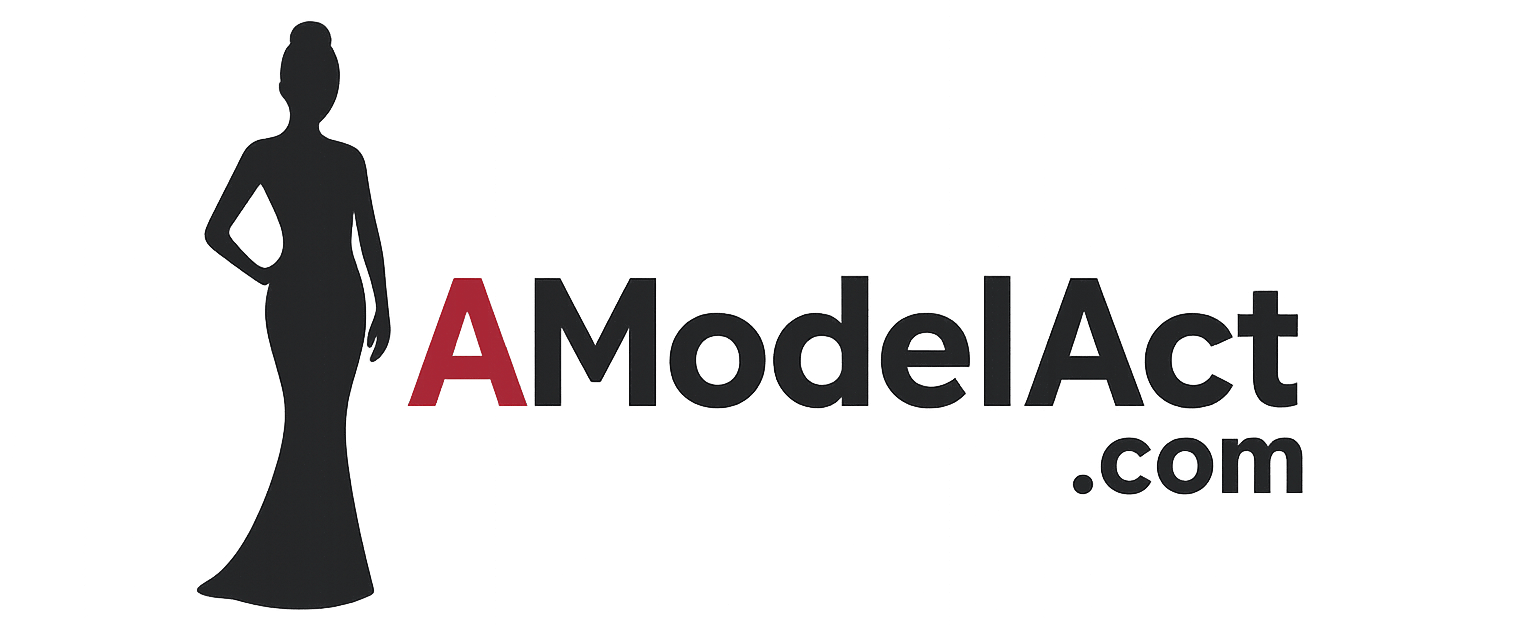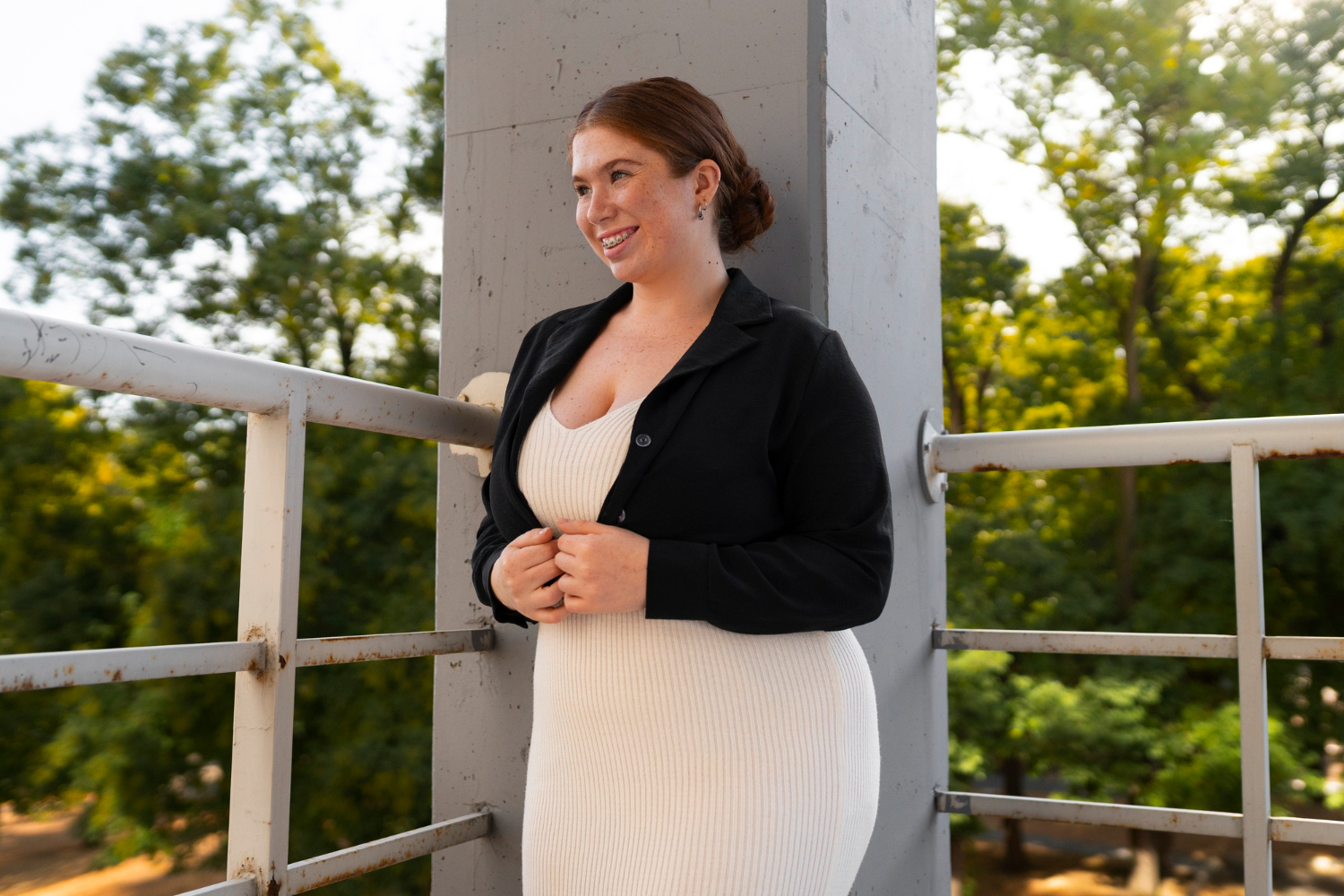Striking the perfect pose as a plus-size model is not about hiding your shape, it’s about owning it. Over the years, I’ve learned that the camera doesn’t lie, but it can be taught to admire. What truly makes a photograph stand out isn’t just lighting or wardrobe. It’s the confidence that radiates from a model who knows how to celebrate her curves. If you’re starting your modeling journey or trying to sharpen your skills, here are my top posing tips for plus-size models that will help you feel and look your best on camera.
Confidence Comes First
Before any pose can work, I need to feel confident. That inner sense of self-love shows in every shot. Confidence doesn’t mean having it all figured out, it means walking into a shoot prepared to own my body as it is. The lens responds to energy, so whenever I’ve felt self-doubt creep in, I remind myself why I started modeling in the first place: to represent beauty in all its forms. For me, that inner power has always translated into better photos, better collaborations, and greater personal satisfaction.
Highlighting Your Best Features
Everyone has features they love more than others. For plus-size models, posing becomes easier when we play to those strengths. My shoulders are one of my favorite assets, so I often experiment with angles that expose them, off-the-shoulder garments, poses with one shoulder toward the camera, or extending one arm while tilting my head slightly. If your legs, waist, neckline, or cheekbones are your favorite features, direct attention to them with posture, hand placement, and body angle.
Elongating the Body With Lines
Curves are stunning, but structure gives them definition. One of the most important posing tips for plus-size models is learning to use lines to elongate the body. That doesn’t mean trying to look thinner, it’s about creating dimension and flow. I often angle one leg forward slightly and shift my weight to the back leg, which creates a subtle S-curve. Slight head tilts and lifted arms also draw the eye along the frame. Elongation isn’t about stretching, it’s about guiding the viewer’s gaze in a natural, flattering way.
Mastering the Three-Quarter Pose
If I could recommend just one go-to pose, it would be the three-quarter angle. Instead of facing the camera straight on, I turn my body slightly to the side, about 45 degrees, while keeping my shoulders relaxed and my chin slightly raised. This pose offers a flattering shape for any body type and highlights natural curves without looking posed. I always find this angle helps show movement and energy without sacrificing control of my look.
Learning to Work With the Camera, Not Against It
When I’m on set, I think of the camera as a scene partner. It responds to my choices, my gaze, my stance, even how I breathe. Early in my career, I used to worry about how much of my body was visible or whether I should “hide” certain parts. But hiding never works. Instead, I’ve learned that using open postures, like placing hands on hips or stretching my arms up, makes me look more present and engaged.
For close-ups, I relax my shoulders, lengthen my neck slightly, and bring emotion into my eyes. When it’s a full-body shot, I consider the line from my foot to my head and ask myself: is this telling a story or just standing still?
Avoiding Over-Posing
It’s easy to fall into the trap of doing too much. Arching excessively, twisting awkwardly, or forcing facial expressions can take away from a natural look. One of my biggest lessons was understanding when to stop pushing a pose and let the moment breathe. I now approach shoots with a few practiced poses in mind, but I stay flexible. Some of my best shots happened in-between the planned ones, when I exhaled, adjusted slightly, or simply reacted to a direction without overthinking it.
Hands Make the Difference
Hands can make or break a pose. Too stiff, and the entire image feels forced. Too loose, and the emotion might not come across. I treat my hands like expressive tools. Instead of letting them dangle or flatten, I soften them slightly, fingers relaxed, wrists curved, and movement intentional. Resting one hand lightly on my waist, brushing hair away from my face, or gently adjusting a necklace brings life to a photo. It’s these subtle gestures that add depth and grace to any pose.
Facial Expressions With Intent
My face tells a story in every frame. When working with photographers, I always discuss the mood of the shoot beforehand. That way, I can channel the right emotion, fierce, dreamy, joyful, mysterious, into my expression. A blank stare doesn’t connect, and a forced smile often shows. Instead, I play with micro-expressions: a soft smile with my eyes, a raised eyebrow, or parting my lips just slightly to breathe energy into a static moment. These nuances elevate a simple pose into something memorable.
Wardrobe as a Posing Partner
What I wear often dictates how I pose. A structured blazer calls for confident, grounded stances. A flowing dress encourages movement, twirls, turns, wind-catching moments. I always make sure my wardrobe works with my body, not against it. When something fits well and feels good, posing becomes a natural extension of that comfort. I also pay close attention to how the fabric moves. A well-timed twirl or a deliberate flick of a skirt can add drama and flair.
Working With Props and Environments
When a set includes props, chairs, stools, mirrors, walls, I use them to anchor my poses. Sitting on the edge of a stool with one leg extended, leaning on a wall with my hand pressed gently, or using a mirror to explore symmetry adds creative depth. I treat my environment as part of the pose. If I’m outside, I might run my fingers through grass or walk slowly while the camera captures the motion. Props aren’t distractions, they’re extensions of the story I’m telling.
Practicing in the Mirror
I regularly spend time in front of a full-length mirror practicing new poses. I explore different arm angles, leg positions, head tilts, and facial expressions until I find combinations that feel powerful. I try to focus on how the pose feels, not just how it looks. If I feel strong, balanced, and expressive, that energy translates on camera. Practicing alone helps build body awareness, which is essential for making small adjustments during a shoot.
Listening to Direction, Adding My Own Flair
Directors and photographers often have a vision, but I always bring my own interpretation to the table. If I’m asked to pose in a certain way, I do it, but then I add something extra. Maybe it’s a slight shift in weight, a more open expression, or changing where my eyes are looking. Collaborating creatively means not being afraid to try new things. And if a pose feels off, I speak up. My comfort and input matter, and the best shoots always come from mutual respect and shared vision.
Posture and Energy Flow
Good posture is about more than standing up straight. It’s about activating my entire body in a way that communicates energy. Whether I’m seated or standing, I draw energy from my core, keep my chest open, and avoid collapsing into any one part of my body. Even small movements, like rolling my shoulders back or grounding my feet, help me stay present and powerful. Posing well isn’t about freezing; it’s about holding energy in a way that feels alive.
Celebrating the Beauty of Diversity
Every plus-size model brings something unique to the table. No two bodies are alike, and that’s the beauty of it. The best posing tips for plus-size models start with celebrating that individuality. I never try to imitate poses that don’t suit my body type. Instead, I modify and personalize poses to reflect me. Whether I’m working in fashion, commercial, lifestyle, or editorial settings, I stay grounded in the knowledge that my look is an asset, not a challenge to work around.
Final Thoughts
Modeling isn’t just about looking good, it’s about expressing something. For plus-size models, that means embracing curves, angles, expressions, and presence with pride and authenticity. These posing tips for plus-size models aren’t just technical pointers, they’re reminders that beauty, confidence, and skill go hand in hand. When I step in front of a camera, I don’t just pose. I perform. I communicate. I shine. And with practice, anyone can do the same.

